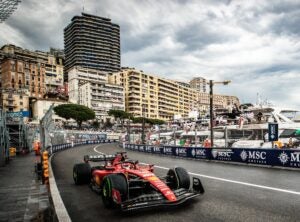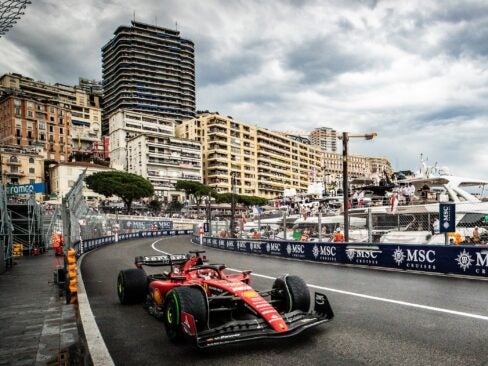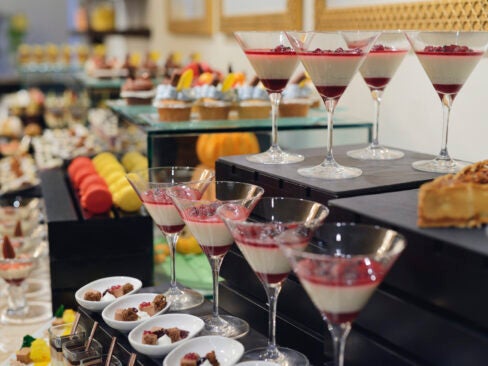By Andy Hayler
 Editor’s note: since October 2015 onwards Hedone offers a choice of two tasting menus only, with a restricted number of covers (22) in order to allow the kitchen to focus to an ever greater extent on quality. Dinner will be offered from Tuesday to Saturday, lunch on Saturday only. The tasting menu is £85, the longer catre blanche menu £125.
Editor’s note: since October 2015 onwards Hedone offers a choice of two tasting menus only, with a restricted number of covers (22) in order to allow the kitchen to focus to an ever greater extent on quality. Dinner will be offered from Tuesday to Saturday, lunch on Saturday only. The tasting menu is £85, the longer catre blanche menu £125.
To make great food, start with great ingredients. This may seem self-evident, yet it is something which seems to elude many high-end London restaurants, and why I head off to the continent if I want to eat really top of the range food. Hedone is interesting in that its chef and owner, Michael Jonsson, is an ingredients expert rather than a chef by background. After training as a chef many years ago in Sweden he switched career and became a lawyer, but always with a passionate interest in food. The Gastroville blog that he writes is influential, and he has advised some Michelin starred restaurants in Europe on ingredient sourcing.
 Now he has switched to the other side of the counter and is behind the stoves of his first restaurant, in modest premises at the unfashionable end of the Chiswick High Road that were previously a Lebanese nightclub. Michael spent over a year travelling the UK searching out artisan suppliers, from producers of flour to unpasteurized butter to shellfish, and supplements the best British ingredients he can find with produce from Europe where necessary. The menu, which has no a la carte option, changes on a weekly basis, and often is adjusted daily in the light of what ingredients are best that day, a similar approach to that taken by Astrance in Paris. A ten course tasting menu is currently available at £70, four courses at £50. A three course lunch is £35 on Thursday through Saturdays. For the ultimate experience the carte blanche tasting menu at £95 uses the very finest produce that the kitchen can obtain. Given the high quality of the ingredients here this is actually good value – this price would not buy you a starter in some top Paris restaurants, where similar and in a few cases identical ingredients are being used.
Now he has switched to the other side of the counter and is behind the stoves of his first restaurant, in modest premises at the unfashionable end of the Chiswick High Road that were previously a Lebanese nightclub. Michael spent over a year travelling the UK searching out artisan suppliers, from producers of flour to unpasteurized butter to shellfish, and supplements the best British ingredients he can find with produce from Europe where necessary. The menu, which has no a la carte option, changes on a weekly basis, and often is adjusted daily in the light of what ingredients are best that day, a similar approach to that taken by Astrance in Paris. A ten course tasting menu is currently available at £70, four courses at £50. A three course lunch is £35 on Thursday through Saturdays. For the ultimate experience the carte blanche tasting menu at £95 uses the very finest produce that the kitchen can obtain. Given the high quality of the ingredients here this is actually good value – this price would not buy you a starter in some top Paris restaurants, where similar and in a few cases identical ingredients are being used.
The dining room has exposed brick walls and an open kitchen, with a few seats at a bar looking into the kitchen in addition to the main dining area, and has carefully thought-out lighting illuminating the tables well. There is a downstairs with a private dining room, and this houses the wine cellar. The wine list had around 200 choices, with a lot of French wines but also selections from elsewhere, at fair mark-ups by London standards. Example wines include Crawford River Riesling Young Vines 2009 at £39 for wine that will set you back £27 in the shops, the lovely Ata Rangi Pinot Noir 2008 at £70 for a wine that retails at £34, up to Javillier Corton-Charlemagne 2007 at £179 for a wine that costs around £70 in the shops.
 I have now eaten 65 meals at Hedone, and have not recorded every dish of every meal, though there is now an extensive photo gallery. What distinguishes Hedone is the relentless focus on the highest quality ingredients. An example of this is the beef, supplied by Darragh O’Shea, probably the best butcher in London at the moment. The chef spends time at the butcher selecting just a few of the choicest cuts of beef with a high degree of marbling and has them individually aged to order. The beef that is served in the restaurant has been aged from between 55 and 80 days, and has the kind of texture that you encounter in Japan.
I have now eaten 65 meals at Hedone, and have not recorded every dish of every meal, though there is now an extensive photo gallery. What distinguishes Hedone is the relentless focus on the highest quality ingredients. An example of this is the beef, supplied by Darragh O’Shea, probably the best butcher in London at the moment. The chef spends time at the butcher selecting just a few of the choicest cuts of beef with a high degree of marbling and has them individually aged to order. The beef that is served in the restaurant has been aged from between 55 and 80 days, and has the kind of texture that you encounter in Japan.
Another example is the bread, where the chef spent training time with perhaps the finest baker in France, Alex Croquet, in order to perfect his technique. Now produced in specialist bread ovens, the sourdough, white and other loaves produced have now reached the stage where they are as good as you will find anywhere. Mr Croquet himself acknowledged that the bread is of a similar standard to his own. This is bread that any three star Michelin restaurant would be pleased to serve. There are many further examples of the degree of effort made here: the puff pastry is made from scratch and not bought, and one particularly good sauce that I tried took the kitchen three days to make, incorporating four separate stages. I could go on, but suffice it to say that this is serious cooking using serious ingredients. The style is deceptively simple with few garnishes, the idea being to let the ingredients speak for themselves.









